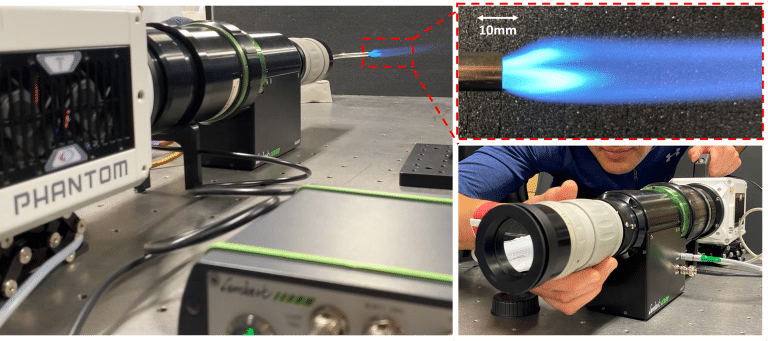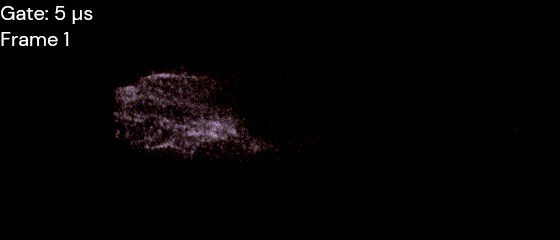HiCATT: How to Perform Intensified High-Speed Imaging in Highly Variable Lighting Conditions
The High-speed intensified Camera Attachment (HiCATT) from Lambert Instruments is an image intensifier specifically designed to be used in combination with high- and ultrahigh-speed cameras, allowing imaging under challenging lighting conditions at rates of up to 10 MHz. The HiCATT is a hybrid intensifier consisting of two stages, dramatically increasing the dynamic range of a high-speed camera, and enabling detection of even single photons at the lowest light levels.
The HiCATT also features ultra-short gated exposures, with exposure times down to 3 ns. One of the functions of a fast intensifier gate is to serve as an ultra-fast optical shutter that eliminates motion blur when observing fast phenomena by reducing the effective exposure time in each frame. The HiCATT can be equipped with different gate control units that provide functionalities such as gain control, gate pulse trains, a multi-channel pulse generator, and programmable gate patterns. One outstanding feature of the gate control unit, the gate loop mode, is described below.
Gate Loop Mode
The gate loop mode in the HiCATT gate control unit allows switching between three different gate settings, sequentially and cyclically. While the high sensitivity of the HiCATT is one of its best features, it is critical to prevent overexposure under high-intensity lighting conditions. The ability to use different gate widths within the same experiment is crucial to accommodate measurements under continuously varying lighting conditions (think for example about the light emission at different stages during an internal combustion engine cycle). The timing chart below illustrates how the Gate Loop mode switches between three different gate settings. The switch to a different gate width is initiated by a “Loop Trigger” signal. The HiCATT is set to gate at every camera exposure. However, the gate width changes every three frames, as set in this example. Once one sequence of three different gates is completed, the next Gate Loop Trigger signal will return the sequence to the first gate setting to start another loop.

Gate Loop Mode in the HiCATT high-speed intensifier: OH* Chemiluminescence Imaging in a Flame
The following high-speed imaging example was performed using a butane torch that generates an atmospheric pressure diffusion flame. The imaging system consists of the following components:
- A Phantom T3610 high-speed camera with a maximum speed of 38,000 fps at its full 1 Mpx resolution of 1280 x 800
- A 25mm HiCATT hybrid high-speed image intensifier with a Gen III GaAsP photocathode and a peak quantum efficiency of 50%
- A 100 mm f/2.8 CERCO UV lens with 90% transmission between 250 nm and 410 nm

The lens was equipped with a bandpass filter centered at 310 nm (10 nm FWHM) to allow only OH* chemiluminescence into the imaging system. To show the Gate Loop mode in action, the gate control unit was set to switch gate widths at every camera exposure trigger. The three gates in the sequence were set to 5µs, 10µs, and 20µs.

The video below shows a sequence of 33 consecutive frames obtained at 38,000 fps, using the full 1Mpx camera sensor. The effect of the gate change from frame to frame is clearly observed in the overall OH* distribution intensity, particularly in the regions downstream of the flame (flow is from left to right).


Different HiCATT Control Units Can Acommodate Different Experimental Complexity Needs:
- A gain control unit that acts as a power supply for the image intensifier, with gate pulse trains supplied externally
- A gate control unit with its own pulse generator, giving the user direct control of the gate width and gate delay
- A gate generator unit with an enhanced version of the pulse generator that has more outputs and lower jitter
For more information and pricing of the HiCATT high-speed intensifier or CERCO lenses, visit our product page and get in touch with us @ [email protected].
